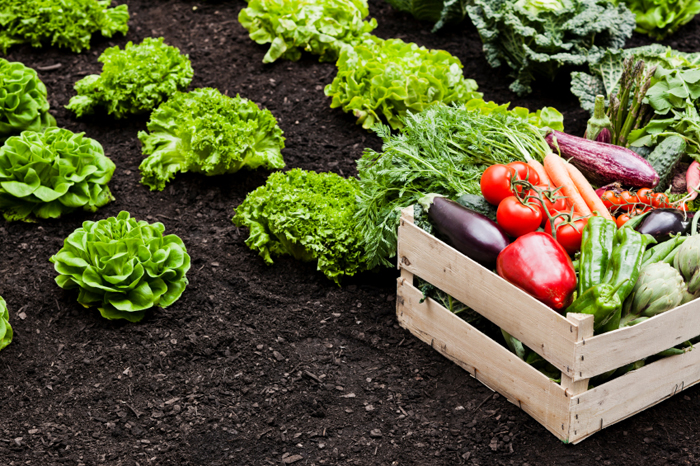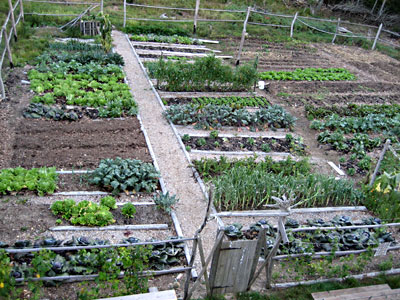Top Learning Materials for Homestead Gardening
Top Learning Materials for Homestead Gardening
Blog Article
Enhance Your Outdoor Location With Creative Gardening Styles and Styles
By checking out various designs, such as the charming informality of home yards or the minimalism of modern aesthetics, one can considerably raise the atmosphere of their surroundings. Furthermore, integrating vertical gardening techniques and sustainable techniques not just boosts aesthetic allure yet also advertises ecological awareness.

Cottage Garden Charm
Cottage gardens, frequently characterized by their lush, casual formats, accept a harmonious blend of veggies, blossoms, and herbs, producing a dynamic tapestry of color and fragrance. This typical horticulture design dates back to the late 19th century, coming from in England, and is valued for its captivating, charming allure.
Secret aspects of cottage yards consist of making use of perennial plants, climbing vines, and self-seeding annuals, which add to an ever-evolving landscape. Growing in dense collections motivates a naturalistic appearance, enabling an eclectic mix of textures and colors. Popular blossoms such as foxgloves, hollyhocks, and delphiniums intermingle with fragrant natural herbs like lavender and rosemary, enhancing sensory experiences while advertising biodiversity.
Incorporating rustic attributes, such as weathered trellises, wood fences, or rock pathways, additionally enhances the visual of a cottage yard. This design not only focuses on charm yet likewise welcomes sustainability, as numerous plants are picked for their ability to bring in pollinators and offer food. Inevitably, the cottage yard charm hinges on its unwinded, welcoming atmosphere, motivating a deep link with nature while providing an ideal retreat for leisure and satisfaction.
Modern Landscape Aesthetics
While the appeal of home gardens evokes a feeling of fond memories and whimsy, modern-day landscape visual appeals welcome a more minimal and structured method. This contemporary design stresses simpleness, functionality, and an assimilation with the surrounding environment. Clean lines, geometric forms, and a minimal color combination identify modern landscaping, permitting nature's beauty to take center stage without unnecessary diversions.
Materials play a vital role in accomplishing this aesthetic. Concrete, steel, and natural stone are frequently made use of to develop hardscapes that complement the landscape rather than bewilder it. On top of that, the mindful selection of plants is fundamental; ornamental grasses and native species are typically favored for their low maintenance and ability to thrive in local conditions.
Water features, such as streamlined fish ponds or mirroring swimming pools, are likewise important to contemporary designs, offering serenity and a focal point. Lasting techniques, consisting of xeriscaping and making use of permeable materials, enhance the eco-friendly duty of contemporary landscaping. Ultimately, modern landscape aesthetic appeals provide an opportunity to create serene outside areas that reflect modern values while fostering a much deeper link to nature.
Vertical Horticulture Technologies
Upright gardening developments have revolutionized the means we come close to gardening in limited spaces, enabling the cultivation of plants in urban environments where ground room is scarce. These ingenious techniques and structures enable gardeners to maximize vertical surface areas, changing wall surfaces, fencings, and even verandas right into lush green rooms.
One famous technology is using modular systems, which are composed of interlocking panels that can be quickly set up and reorganized - Homestead Gardening. These panels often come equipped with integrated watering systems, making sure that plants obtain sufficient dampness while reducing water waste. In addition, vertical gardens can include a variety of plants, from flowering varieties to edible herbs, promoting biodiversity and improving aesthetic appeals
An additional noteworthy improvement is the assimilation of smart modern technology, such as sensing units that keep an eye on dirt moisture and nutrient levels. This innovation permits precise care tailored to the requirements of specific plants, ensuring optimal growth and wellness. Furthermore, lightweight materials and vertical planters made from recycled items add to sustainability while lowering the physical burden of conventional horticulture.
Sustainable Horticulture Practices
Sustainable gardening techniques have actually become a crucial approach for garden enthusiasts seeking to minimize their ecological impact while boosting the health and wellness of their communities. These methods concentrate on the mindful administration of natural deposits, advertising biodiversity, and cultivating a durable landscape.
One secret element of lasting horticulture is soil wellness. Using organic garden compost, mulching, and crop rotation improves the soil, promoting valuable microbes and minimizing the need for chemical plant foods. Furthermore, native plants are urged, as they need much less water and are a lot more resistant to neighborhood insects, hence minimizing reliance on pesticides.

In addition, sustainable horticulture encourages making use of recycled products for garden frameworks and paths, reducing waste and ecological impact. By taking on these practices, garden enthusiasts can produce a growing outdoor area that harmonizes with nature, guaranteeing both individual enjoyment and ecological obligation.
Themed Garden Inspirations
Producing a themed garden can transform an average outside space right into a captivating refuge that reflects personal style and passions. Themed yards offer a special possibility to express imagination while improving the visual allure of one's landscape. Popular themes include Japanese Zen gardens, which highlight harmony via carefully organized rocks, water attributes, and minimal growings.
Another inspiring style is the home garden, defined by a casual layout full of an abundance of great smelling natural herbs and vivid blossoms. This design advertises biodiversity and brings advice in pollinators, making it both environmentally helpful and lovely.
For those with a propensity for journey, an exotic yard can evoke a getaway feel, featuring bold vegetation, vivid blossoms, and maybe also a little water function to simulate a hotel environment.
Additionally, a themed garden can draw ideas from literary works or background, such as a Shakespearean yard that includes plants mentioned in the Poet's jobs.
Selecting a style not only offers direction in plant option and format yet likewise develops a cohesive atmosphere that welcomes exploration and satisfaction, making exterior areas absolutely unique.
Conclusion

Incorporating rustic functions, such as weather-beaten trellises, wooden fencings, or rock pathways, further enhances the aesthetic of a cottage yard. In addition, vertical gardens can incorporate a range of plants, from flowering varieties to edible herbs, advertising biodiversity and enhancing aesthetics.
Producing a themed garden can change an average outdoor space into a fascinating refuge that mirrors individual design and passions. Themed yards supply an unique opportunity to express creativity while enhancing the aesthetic appeal of one's landscape. The charm of cottage gardens, the sleekness of modern landscapes, innovative upright horticulture strategies, lasting techniques, and themed yards each add one-of-a-kind components that foster both beauty and functionality.
Report this page